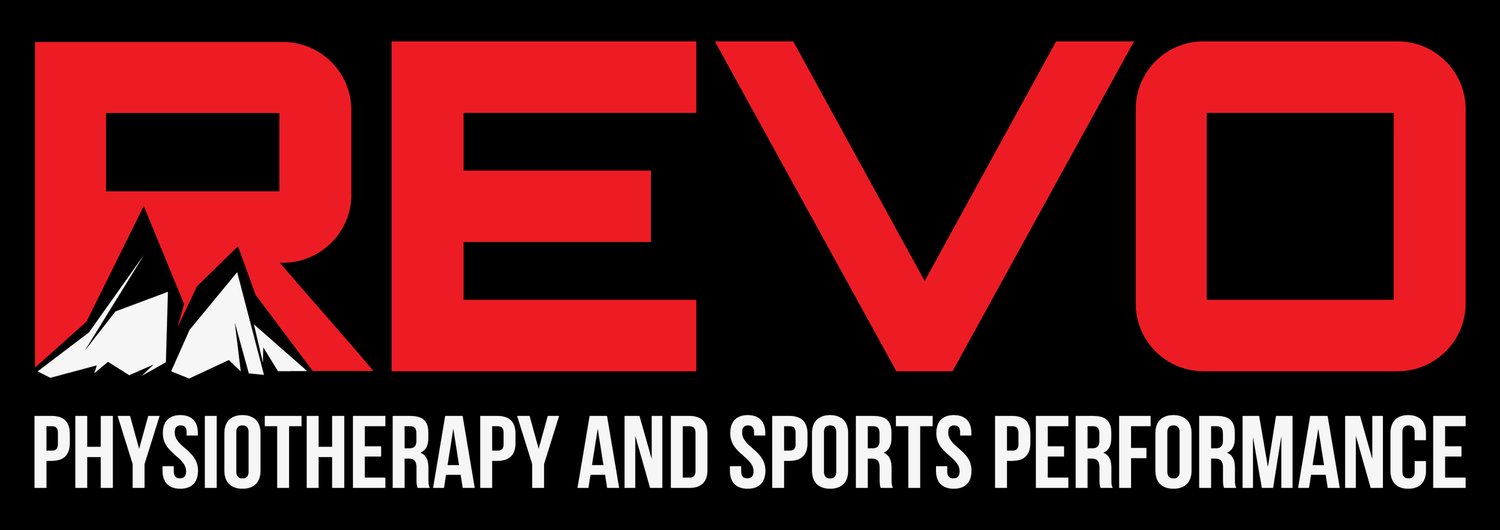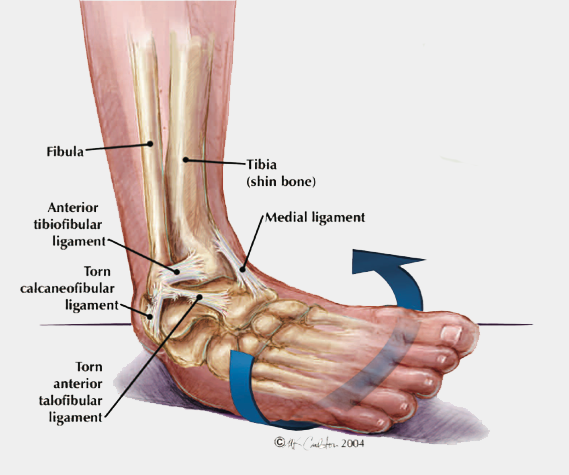Ankle sprain? What next?
The ankle sprain is a super common injury we see in the springtime. You're getting back outside more to run and ride and unfortunately, the lateral ankle sprain sometimes follows.
When we say lateral ankle sprain or inversion ankle sprain, you may think of rolling your ankle inward. This commonly results in injury to the anterior talofibular ligament and can also have an impact on the calcaneofibular ligament. These provide a good amount of the stability to the outside of your ankle, especially during cutting movements and while on unstable ground.
I know you've been there. This hurts!
Detailed images of ATF and CF ligaments at the lateral ankle.
Just like any ligament injury there are grades of injury ranging from 1 or mild disruption of the ligament to 3 or complete rupture of the ligament. If you have experienced this injury, you need to follow up with a health care provider who can evaluate the nature of the damage to the ligaments and also decide if advanced imaging is warranted. If you've seen your provider and have ruled out fracture and grade 3 injury you can proceed with conservative treatment.
I am not your PT but if I sprained my ankle on the trail today, this is what I would do to take care of it.
I will start with voodoo flossing the ankle. This can help with rapid reduction of swelling that often follows this injury. I start the wrap toward my toes and use moderate tension as I move the wrap above the ankle. Once I have applied this wrap I will add in range of motion as I can tolerate. In general, we like to avoid excessive inversion (the movement that caused the injury) to avoid irritating the ATF and CF ligaments. Rule of thumb here is 2 minutes of movement, no numbness, tingling or excessive pain. I would try this 2-3 x daily.
After flossing the ankle and calf, I would begin heating the ankle. Wait, what? Heat?? That's right, we prefer to add heat vs ice in this scenario. A few caveats will follow but I start with warms temps and increase as I can tolerate more. 10-15 minutes, 2-3 x daily
Following heating the area I ALWAYS add compression to the joint. This could be an ankle sleeve or an ACE type wrap. Begin wrapping toward the toes with moderate tension and decrease the tension gradually as you move toward to the calf. This will help keep the acute swelling under control.
Next step is always elevation and movement. I may prop my ankle up on the couch and start moving the ankle in all comfortable planes. Allow gravity and the bodies natural filtering system to help reduce all the swelling at the lateral a part of the ankle.
To be clear, we have totally abandoned the RICE or rest, ice, compression and elevation method. Our overarching themes include as much movement as you can tolerate, compression both with and without movement, elevation and then more movement. As stated before, meeting with a health care provider, PT, ATC or MD will help you rule out more serious injury. You may also have a discussion surrounding proper bracing of the joint if required and a safe timeline for a return to activity.
Once you begin to feel improvement and your provider has deemed the joint stable you can begin to focus more on improving your dorsiflexion range of motion. This range is the most effected following a lateral ankle sprain and is critical for your return to sport. Here are a few ways we like to work on the range. Following an acute injury, non of these should cause pain, if that is the case you need to discuss with your PT.
What other treatment techniques do you like for lateral ankle pain/sprains?




